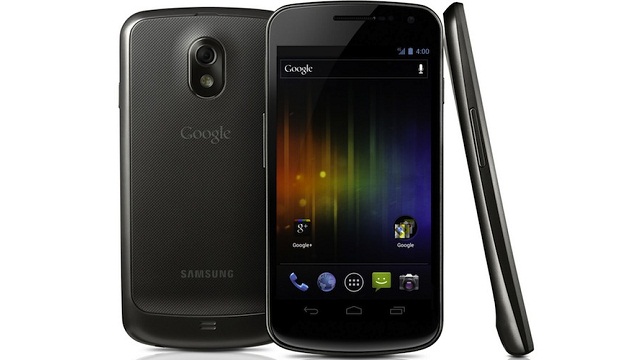Google has announced Android Ice Cream Sandwich along with the Samsung Galaxy Nexus after much fanfare and after postponing its initial planned debut during CTIA following the death of Steve Jobs. Android 4.0 marks a major shift in the way the operating system works as the goal is to minimize fragmentation across devices while also providing a universal approach to app development, with apps and hardware developed around 4.0 expected to seamlessly scale from the current mobile phone and tablet hardware templates into the goal of a universal platform that can allow for apps to work across devices without the need to code for specific devices. Â Continue reading for the rest of the breakdown.
Starting with the flagship hardware for the release, the Samsung Galaxy Nexus features a first of its kind 4.65-inch HD Super AMOLED touchscreen display at 720p resolution, 1.2 GHz dual core processor, 16/32 GB versions, dual-band Wi-Fi N radio (2.4 GHz/5 GHz), NFC support, 5.0 megapixel rear-facing camera, 1.3-megapixel front-facing camera and support for HSPA+ and LTE depending on carrier. The phone also features a redesigned camera application and new hardware, which introduces panorama mode, 1080p video capture, zero-shutter lag and effects such as background replacement and distortion filters.
Among the key new features in Ice Cream Sandwich and the Galaxy Nexus is Face Unlock, which uses facial recognition to unlock  the phone using the front facing camera, though it does need to be calibrated and can be thrown off by extreme lighting in practice, as evidenced by last night’s failed demo during the launch event in Hong Kong. Android Beam uses the built-in NFC hardware to share web pages, apps and YouTube videos with others by simply tapping phones together, provided both phones are running Ice Cream Sandwich with NFC compatible hardware.
With Ice Cream Sandwich, Google is moving away from hardware buttons, as the Galaxy Nexus does not feature the usual array of Android home buttons and instead relies completely on software based buttons for navigation. Related to that point, the usual slate of widgets for Android can now be resized to suit personal preference as well as including new panels for mobile data monitoring, contacts and the inclusion of native screenshot capabilities.
In terms of the design of the phone, Samsung’s CEO admitted that the design of the phone was explicitly created to circumvent Apple design patents, with a slightly tapered design that is unlike any iPhone model on the market, in an obvious nod to currently ongoing litigation while the size of the phone is meant to resemble a miniature tablet rather than any conventional smartphone, with an elongated teardrop shape.
To close out, the Android 4.0 SDK has also been rolled out to developers and manufacturers, with the SDK featuring all of the key components previously noted as well as a new UI toolkit; social, calendar, and Android Beam APIs; new controls for the camera, video camera, music player, image effects and face detection; hardware-accelerated 2D mapping; and new text-to-speech APIs. With the availability of the SDK after the months of stalling on Honeycomb source, Google is hoping that developers will return to take full advantage of Ice Cream Sandwich and its much improved feature set.
As for other manufacturers, Motorola has confirmed that it will roll out ICS for its recently announced DROID RAZR Android smartphone in 2012, while HTC is taking a more measured approach, as it has yet to commit to the update with the following statement:
We are excited about the latest update for Android, Ice Cream Sandwich, and are currently reviewing its features and functionality to determine our upgrade plans. Our goal for Android updates is to give every customer an improved user experience, which means balancing each phone’s unique hardware, HTC Sense experience and the Android kernel. While our goal is to upgrade as many of our recent devices as possible, we are committed to maintaining every phone’s performance and usability first. Please stay tuned for more updates on specific device upgrade plans.
The phone will be launched next month as a Verizon Wireless exclusive for $299.99 after a new 2 year agreement, with regional variants also launching in the same timeframe. Google’s Andy Rubin also confirmed that previous Nexus devices would also receive Ice Cream Sandwich but declined to elaborate on specific launch dates, only stating that they would roll out weeks after the launch of the Galaxy Nexus. Regarding Android 4.0 and tablets, Rubin also declined to specify availability for specific hardware but did note that applications developed for 4.0 would work across devices.
